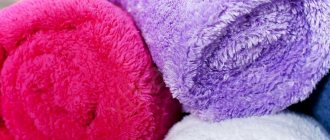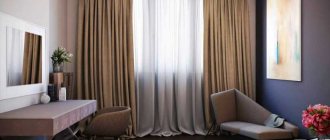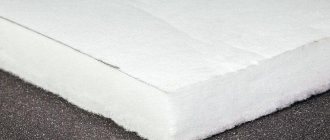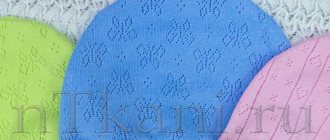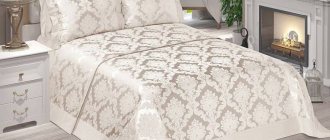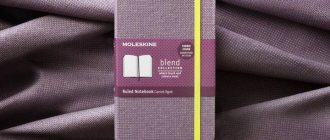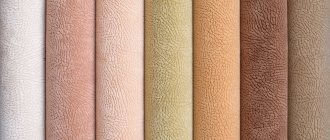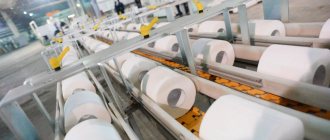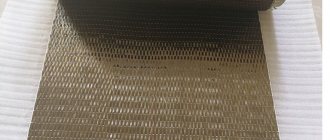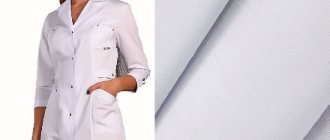Bengalin, what kind of fabric? According to reviews, this is a stretch natural fabric. Excellent imitation silk. What is the fabric made of: natural bengalin uses only wool, silk or cotton fibers. When mixed with synthetics, nylon or viscose threads are added to the weave. Elastane added to the weave increases the stretchiness of the fabric.
A mixed version of the fabric is also available, including both natural and synthetic fibers.
History of Bengal
A few centuries ago, natural silk, obtained from unraveled silkworm cocoons, was considered a very expensive and rather rare material that few could afford. Therefore, Eastern and European manufacturers were faced with the question of inventing a more accessible and cheaper analogue.
For the first time, a material imitating silk fabric appeared in the eastern region of India - Bengal. This is what influenced the choice of the name - Bengal. Only at the end of the 19th century, Bengali fabric was brought by French colonists to Europe, where it instantly conquered high society because of its similarity to silk not only in appearance, but also in quality characteristics.
The first samples were made on the basis of natural silk fibers. Due to the ease of processing of the material and its availability, dresses of complex cut with drapery were made from it. Over time, synthetic components began to be included in the composition in order to reduce the cost.
Application
The texture of the material and its unsurpassed properties make bengalin suitable for sewing several types of clothing.
First of all, dresses are made from this fabric: summer, cocktail, evening and even wedding. It is actively used for sewing light blouses and sundresses. You can sew shorts, skirts and trousers from bengalin.
Sometimes this material is used for sewing light outerwear, because bengalin is a fairly durable fabric, which means that a product made from it will last for many years. The strength and wear resistance of bengalin make it possible to use it for sewing children's products. The material is often used to complete the look: collars, cuffs, and frills are sewn from it.
Bed linen with two zippered duvet covers is a great solution for those who sleep under different blankets.
Cotton Dreams bed linen is made from cotton.
Here you can see a photo of a bamboo Roman blind: //izvolokna.com/domashnii/gostinnaya/shtory/bambukovye-na-okna.html.
Care
Although bengalin is a durable fabric, it is susceptible to various snags and shrinkage, to avoid these troubles, you need to know the rules for caring for this type of material:
- Firstly, you need to wash the products at a low temperature (no more than 30 degrees) and at low speeds, so the product will not decrease in size. Please note that some types of bengalin can only be washed by hand; there are also varieties of this fabric that cannot be washed at all, but can only be dry cleaned. It is important to follow the instructions on the product.
- Items should be ironed on the reverse side, including the “silk” mode; it is even better to use a home steamer for these purposes. In order to preserve the bright colors of products for a long time, you should dry them on the wrong side, if the drying takes place on the balcony and the rays of the sun fall on the item.
Now you know almost everything about the amazing bengalin fabric, you may already want to purchase products from this material or sew them yourself. Having made your final decision, you are unlikely to regret it, because bengalene is truly a beautiful, comfortable and wear-resistant fabric.
How to produce
Modern bengalin fabric: what is this material and how is it produced? The manufacturing process is carried out using a perpendicular weave technique using threads with a single twist coefficient. As a result, a barely noticeable characteristic ribbed pattern is formed on the fabric. The width of the relief depends on the length and width of the weaving threads and weft used.
The use of different combinations and sequences of fibers allows you to create two types of fabric:
- light for summer, evening, demi-season clothing, etc.;
- with increased density for sewing outerwear.
Important! Whatever category bengalin belongs to, its main property is its high strength, resulting from its characteristic weaving.
The production process also involves coloring the material. The fabric can be either plain or with prints applied to it. At the same time, bengalene with a high content of natural fibers is more resistant to fading than its polyester counterparts, which can fade during the first wash.
Origin story. Raw materials and production
Bengalin first appeared in India, namely in Bengal, one of the states of this country. Hence the name - after the name of the area. The fabric appeared in Europe when the French brought it from India. She immediately gained popularity.
Initially, bengalin contained only natural silk fibers. Then cotton began to be added to silk in order to reduce the cost of the material. Currently, the composition of bengalin is allowed in very diverse variations; it can contain both natural fibers (silk, cotton, wool), and artificial (viscose), and synthetic (polyester). Mixed fibers are also allowed. Also an obligatory component in the composition of bengalin is elastane - as a rule, its content ranges from 2 to 5%.
The most popular and high-quality bengalin composition these days is considered to be the ratio of 98% natural cotton fibers to 2% elastane.
Read about: Cheviot is a strict fabric for serious moments.
Single twisted threads are used for production. The threads are intertwined by mutual perpendicular intersection; as a result of such interlacing, the structure of the fabric is not uniform, but has a small rib. If you use warp and weft threads of different thicknesses, the pattern can be varied in rib width, volume, etc. In addition, this weaving method gives the fabric a special density and strength.
Types, composition, features
The composition of bengalin fabric is quite diverse and depends on what fibers are added to it during production.
He can be:
- Natural . In this case, the material is based on raw materials of natural origin, for example, silk, wool, cotton threads.
- Artificial (synthetic) . Made using viscose, nylon or polyester.
- Mixed . The composition contains derivatives of various types.
[vote2x id=”2744" align=”center”]
Flaws
Despite the fairly high quality, the fabric has several disadvantages:
- can emphasize not only the advantages of a figure, but also focus on its shortcomings;
- artificial fabric, consisting entirely of synthetic fibers, can cause an allergic reaction and irritation on the skin;
- the fabric is susceptible to the formation of puffs, especially for samples with a high elastane content;
- during use and washing, the material shrinks, especially if care rules are not followed;
- high-quality fabric is expensive.
Advantages
Bengalin material has many advantages:
- Air permeability . This property creates a pleasant microclimate for the skin.
- Low thermal conductivity . Helps you feel comfortable in both hot and cool weather.
- Wear resistance . Thanks to weaving, the fabric is characterized by increased strength and practicality.
- Softness, obedience when sewing . Provides the ability to sew products of any cut and make drapery.
- Elasticity, non-deformation . Items made from bengalin do not wrinkle when worn, do not form creases, do not stretch and do not lose their ability to keep their shape even after several washes.
Important! Bengaline is one of the most comfortable fabrics for the skin, which does not restrict movement and fits perfectly to the figure.
Bengalin fabric: stretches or not
Bengalin is one of the materials that are suitable for sewing even very complex outfits. But those who are faced with choosing a base for making tight clothing may have a question: does bengaleen fabric stretch or not?
In this case, you can definitely give a positive answer. There are many varieties of bengaline, made using several types of raw materials, used in different proportions. But whatever the composition, it contains from 2 to 5% elastane threads so that the fabric stretches better. The classic combination is 98% cotton and 2% elastane.
The higher the percentage of elastane, the higher the degree of elasticity. However, there is one caveat here too.
Important! When sewing clothes, you need to take into account that bengaleen stretches only in length, and not in width.
Advantages and disadvantages
This weightless matter has excellent characteristics and properties:
- good breathability. Bengalin allows air to pass through well, due to this it is pleasant to the body and is not hot in it;
Evening Dress
- wear resistance. This material is durable and practical;
- low thermal conductivity. Because of this feature, wearing products in summer gives a slight coolness, and in winter - warms up;
- texture allows the product to hold its shape and create beautiful drapery over it.
All clothes made from bengalin fit perfectly to the figure. Therefore, it can be used for sewing a variety of skirts and dresses.
Note! The ability to retain its shape is maintained even after repeated washing, due to which the material can be used for sewing items with a complex cut.
Glossy fabric
Euro bengalin: what kind of fabric
On the label of some things you can see the name Euro Bengalin “Soft”. Euro bengalin: what kind of fabric and what properties does it have? This material is not only practical and pleasant to the touch, but also quite attractive, which is why it is actively used for the manufacture of home textiles and decorative elements. It contains nylon and viscose.
Separately, it is worth noting Turkish and Bengali jeans. The latter refers to mixed fabrics. Outwardly, it resembles thick cotton, is pleasant to the touch, stretches and drapes well. Suitable for sewing summer or demi-season items.
Helpful information:
What kind of material is velvet?
Corduroy fabric
The advantages can also be noted:
- shrinkage resistance;
- wear resistance;
- durability.
Bengalin from Turkey is almost completely natural. It consists of cotton with a minimal proportion of elastane fibers in its composition, is pleasant to the body and has good performance characteristics.
Also in some stores you can find such a name as stretch bengalin. Stretch bengalin: what kind of fabric is it and is it a type of this material? In fact, there is no such thing. Bengaline is simply compared to stretch for its elasticity and softness.
Composition and properties, description of material
Natural fiber materials often include wool, cotton and silk. This fabric can also be made from synthetic materials, such as viscose and nylon. Often in the composition you can see a combination of natural and synthetic fibers. Now the composition of bengalin most often includes a combination of cotton and elastane in a ratio of 98 to 2, but this may vary. Below is a complete description of bengaleen fabric.
Does it stretch or not?
Bengalin is a stretch fabric, so it will stretch well and keep its shape.
Euro bengaleen
This type of material may contain synthetic components, for example, viscose and nylon. It is not inferior in practicality and appearance when compared with natural ones. This type is used not only for sewing clothes, but also for the production of home textiles or decorative items.
Jeans bengaleen
This textured material is characterized by the diagonal appearance of twill weaving: the rib is visible from the front and back sides, and the fabric is not see-through.
Jeans bengaleen
The fabric does not shine, but looks like cotton.
Bengalin stretch what kind of fabric
Bengalin is a stretch fabric that is very similar in appearance to silk. It is quite thin and pleasant to the body. Summer items, such as skirts or sundresses, are mainly made from it.
Bengal care
When choosing fabric for sewing clothes, it is not enough to decide what kind of material bengalene is and what its main properties are. It is more difficult to figure out how to properly care for it.
Expert opinion
Tkaneva Lyudmila Viktorovna
Seamstress with 30 years of experience
This fabric is highly durable, but it can also suffer if you care for it incorrectly.
Three important components of care are:
- wash;
- drying;
- ironing
How to wash
To prevent the product from shrinking or fading, it must be washed taking into account the following recommendations:
- at a water heating temperature of no higher than 30 degrees;
- at low speeds;
- with minimal spin.
Important! Some types can be washed exclusively by hand or dry cleaned.
How to dry
You need to dry things made from bengalin:
- In natural conditions. Do not use heating devices or special dryers for drying.
- Turned inside out. This way the fabric will fade less and will retain its attractive appearance longer.
- Away from direct ultraviolet rays. Synthetic fabric options are prone to fading quickly in the sun.
How to iron
Products should be ironed:
- on the reverse side;
- on delicate mode;
Important! The ideal option for ironing bengalin items is a home steamer.
Care instructions
Bengaline is considered a not too fancy fabric. But there are conditions that must be observed when caring for things made from this material.
How to wash
- Preferably by hand;
- if in a washing machine, then at minimum temperature;
- at low speeds, it is better to choose a gentle delicate mode;
Some types of this fabric cannot be washed; the alternative is dry cleaning.
How to dry
- Mandatory in natural conditions;
- turning the product inside out;
- It is recommended to do this away from direct sunlight to preserve color.
How to iron
- From the inside out;
- exclusively on “silk” mode;
- using a steamer.
These are general wishes. Depending on the composition of the material, recommendations for use may vary slightly. After purchasing a wardrobe item made from this fabric, you need to study the information on the tags.
Reviews of Bengal
On the Internet you can find many positive reviews about an affordable silk substitute - bengalin. Here are some of them:
Olga: “The material is not cheap, but it is very pleasant to the touch. I sewed a sundress from it, and I was very pleased with the result. This fabric is very easy to work with.”
Tatyana: “There were no bengalina items in my wardrobe, but one day a friend presented me with a small piece of this material. The fabric turned out to be very pleasant to the touch, so without thinking twice, I ordered myself a skirt of a complex cut from it. The product turned out to be not only very beautiful in appearance, but also comfortable.”
Elena: “I really like clothes made from bengalin. Working with this material is a real pleasure, because it is very easy to cut and retains its shape perfectly. Summer dresses with drapery look especially good.”
